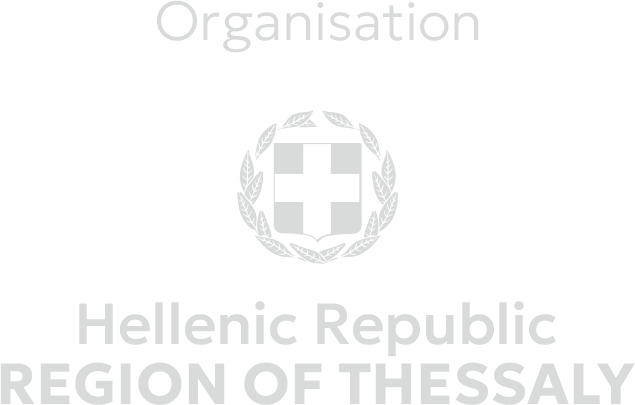TAKIS TLOUPAS
1920-2003
Born in Larissa in 1920, Takis Tloupas first encountered photography around 1936 during an excursion with the local Mountaineering Club. That early exposure sparked a lifelong fascination. Inspired by his travels through the Greek countryside and his sharp eye for human societies, he chose to dedicate himself fully to photography shortly after war, eventually opening his own studio.
Tloupas’s lens captured a world in quiet transformation: the sweeping landscapes of the Thessalian plain, the labor of working people, the ascetic solitude of Meteora and Mount Athos, the lake dwellings of Karla, the nomadic Sarakatsani communities and Vlach settlements in the Pindus mountains, as well as urban everyday life, social gatherings, markets, celebrations and laments, children’s games in the street, and the structured environment—all shaped his photographic “gaze” reflecting a deep sensitivity to both place
and people.
His work gained recognition and was presented in many solo and group exhibitions in Greece and abroad. A major milestone in his long career was his award in 1994 by the Ministry of Culture, where he was honored alongside 50 prominent figures from the arts and literature for his contribution to Greece’s cultural heritage.
When he passed awayon May 8, 2003, he left behind thousands of negatives, an irreplaceable visual record of a Greece that has largely disappeared. Today, this invaluable material is preserved by his daughter, Vania Tloupa, the guardian of his photographic legacy.
A photographer interested solely in documenting the way haystacks are piled, how agricultural tasks are carried out, or in faithfully capturing the architectural monuments of his city, would never pay attention to whether the sky in his frame is filled with sculpted clouds, or if the light passing through them forms iridescent beams that dance in the road’s suspended dust.
Takis Tloupas’ work is not limited to a documentary record of his era, his Thessaly, his memories and experiences. It reveals a deeper need to see the world of toil through the romanticism and lyricism of light. The postwar decades in Greece were times of poverty and relentless labor—times of anxiety and political upheaval, for many a dark and difficult era…
Perhaps it was the censorship of those years, or perhaps photographers sought simpler artistic forms, inspired by Greek light and the Mediterranean stereotypes that were being zealously and proudly reproduced across Mediterranean countries. This Greek light—not only drawing attention and protest away from harsh reality—continues to enchant both foreign and Greek artists, photographers, and filmmakers, who through their imagery reproduce various stereotypes of Greece and Greek identity.
Some artists’ work becomes known only much later. Others—mainly in cinema—left an indelible stereotypical imprint on the identity of Greece. Kakogiannis, Dassin, Koundouros, Jean Negulesco, Andrew Marton in film, as well as Herbert List, Constantine Manos, Jacques Lacarrière, Bresson, Tloupas, and his contemporary Greeks, through their imagery celebrate two common elements: Light and Greekness.
Perhaps the major social changes in Greece during those decades, the shift to new ways of life, the gradual industrialization and modernization of production processes, together with the inherent nature of photography as an aide-mémoire—a tool that aids and revives memory—pushed Tloupas even more to document a vanishing world.
Self-taught and a visual lyricist, Takis Tloupas was not an apolitical photographer. The subjects he chose reflect a deep need and a conscious decision to document the traditions of his homeland and the historical context in which he grew up—always placing the human figure at the center of his photography. He drew inspiration from his immediate surroundings. His dedication to the idea of documentation and his sense of duty to capture the vanishing Greece is akin to the meticulousness—and scientific rigor—of a historian who uncovers, collects, and records oral tradition.
Nevertheless, his aesthetic approach does not seem to carry influences from the Italian and French neorealist filmmakers of his time, nor does it resemble the realist historian’s pursuit of objectivity and documentary clarity. Instead, his work shares greater kinship with the cinematic aesthetics of his era: Bergman, the socialist realism of Mikhail Kalatozov, and the imagery of Soviet photographer Alexander Rodchenko—not just in his thematic choices and the subjects he photographed, but especially in the aesthetic forms he selected, his camera angles, his optimistic textured skies, and the tenderness and democracy with which he
treated his subjects. This “democracy,” many years later, in a wholly different conceptual context, was recognized by William Eggleston as photography’s undeniable strength: to give everything and everyone an equal right to be photographed.
Through his work emerges a romantic idealist whose aim was not to beautify the agony and toil of rural life to make it palatable to urban salons or other social classes (as was often the case in Western European and American cinema of his time). He sought an escape from an industrializing and harsh Greece of land speculation—towards clear images of a Greece of
primitive beauty. On an aesthetic level, the work of Takis Tloupas marks his personal and anguished escape into a utopian idealistic world, capturing a dreamlike, luminous universe of his own.
D.Κ.


